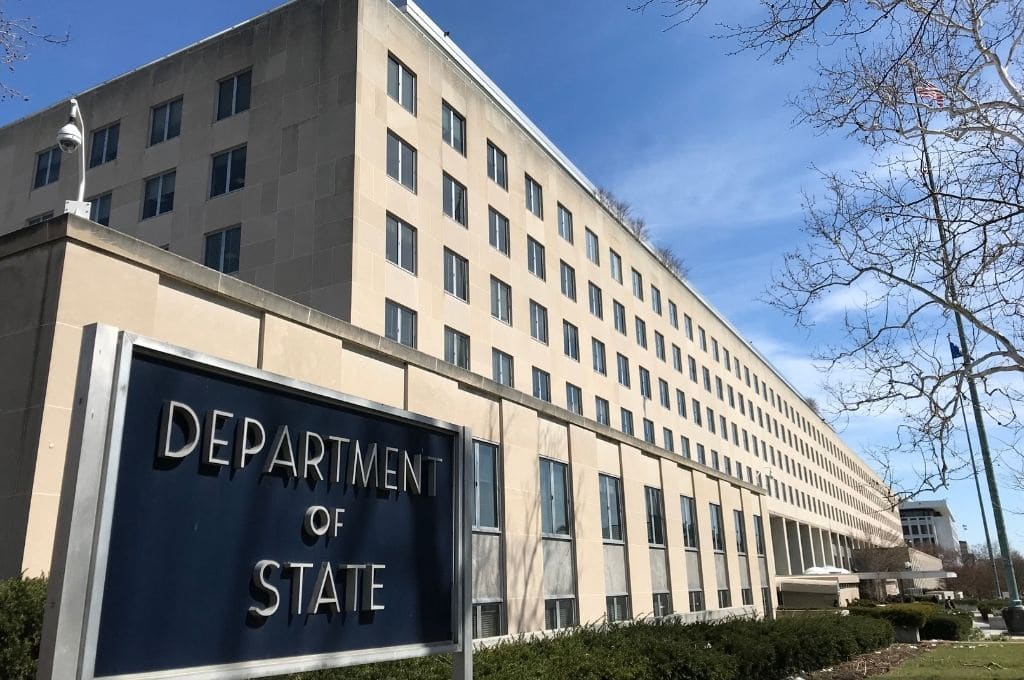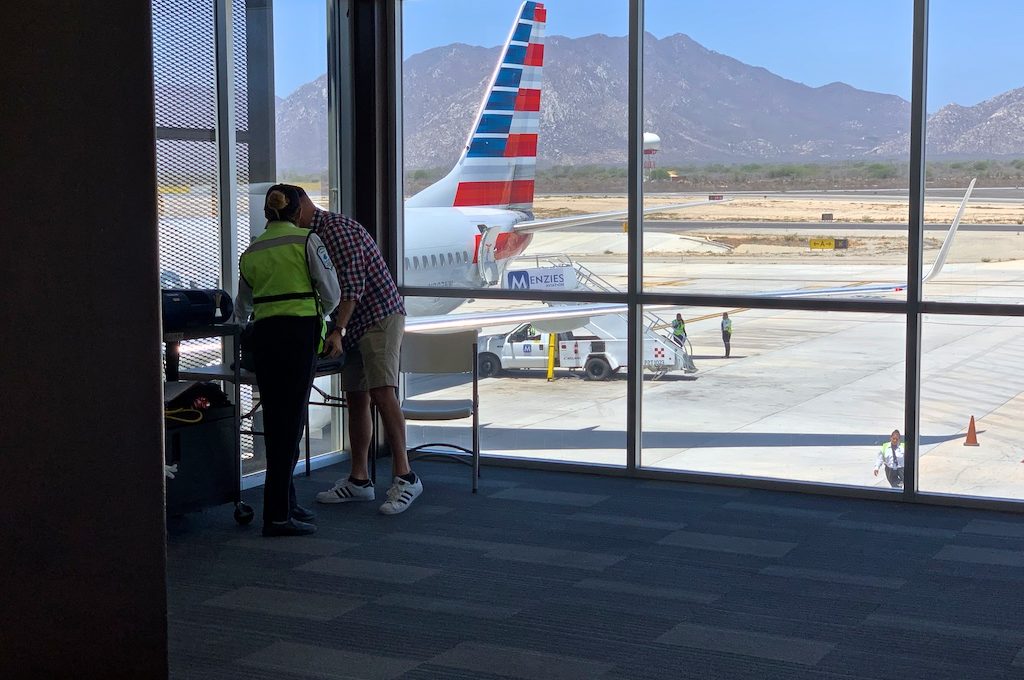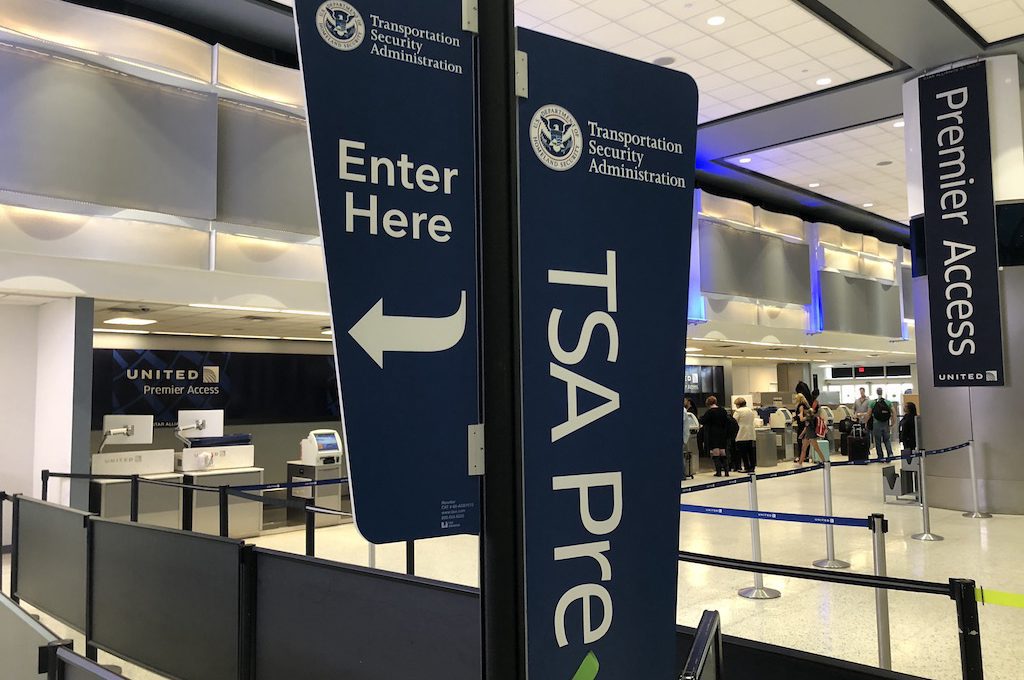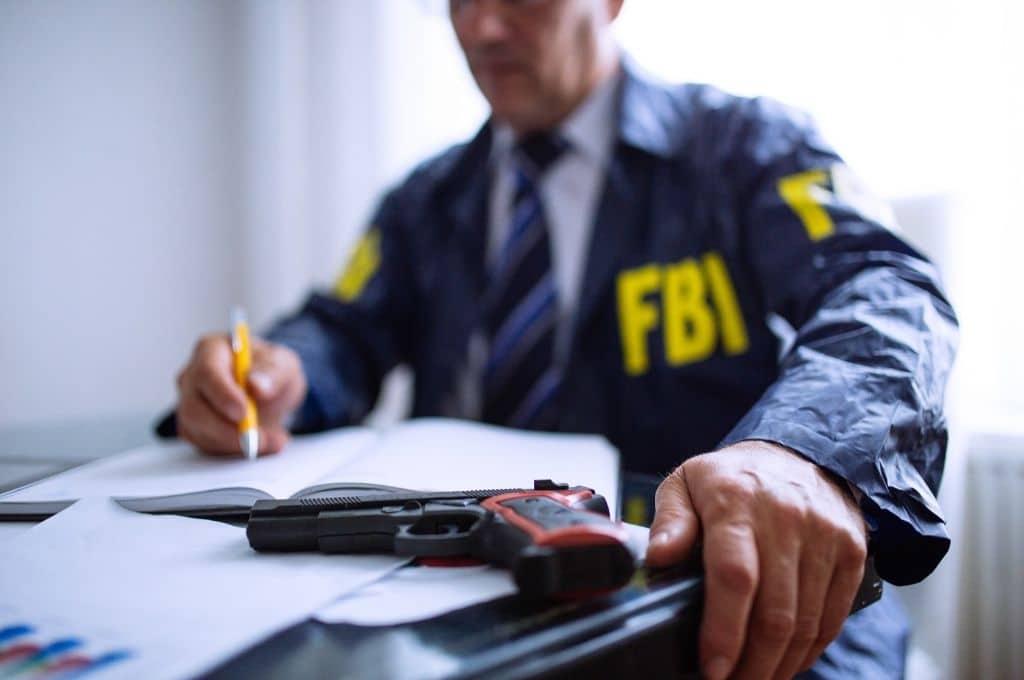For many people, there is a lot of mystery surrounding the TSA’s No Fly List. They wonder how exactly the list works and what happens if your name gets put on the list?
In this article, I will shed light on the entire process.
You’ll see how watchlist nominations are made, verified, and placed on the No Fly List. I’ll also highlight a number of related watchlists that are similar to the TSA No Fly List but serve slightly different purposes.
It’s worth noting that a lot of this process is secretive and subject to change but I have taken almost all information only from government sources and declassified documents.
Table of Contents
How it all starts
In order to really grasp how the TSA No Fly List works, you need to understand how the bigger picture process functions with respect to identifying potential terrorists.
I’ll walk you through all of the key departments and steps that are involved below.
Terrorist Screening Database (TSDB)
There is something known as the Terrorist Screening Database (TSDB) which is the main database that is commonly referred to as the “terrorist watchlist.”
(This is NOT the No Fly List but it plays a major role in placing people on that list as will be shown below.)
The TSDB is maintained by the FBI’s Terrorist Screening Center (TSC), which plays the central role in maintaining the current No Fly List that TSA uses.
TSDB nomination process
How does your name get on the TSDB?
It all starts with personnel called “originators.”
Originators work in places like intelligence and law-enforcement agencies or even at embassies and consulates.
These people nominate individuals that are classed together as “known or suspected terrorists” (KSTs).
There are specific definitions for people who fall under these classifications.
A “known” terrorist is:
an individual whom the U.S. government knows is engaged, has been engaged, or who intends to engage in terrorism and/or terrorist activity, including an individual:
(a) who has been charged, arrested, indicted, or convicted for a crime related to terrorism by U.S. government or foreign government authorities; or
(b) identified as a terrorist or member of a designated foreign terrorist organization pursuant to statute, Executive Order, or international legal obligation pursuant to a United Nations Security Council Resolution.
A “suspected” terrorist is:
an individual who is reasonably suspected to be, or has been, engaged in conduct constituting, in preparation for, in aid of, or related to terrorism and/or terrorist activities based on an articulable and reasonable suspicion
At the time of nomination, originators can recommend that the individual be included on a specific TSDB derivative list such as the No Fly List.
The KSTs nominated for the terrorist watchlist are then vetted by agents at either the National Counterterrorism Center (NCTC) or the FBI.
TIDE
During the vetting process, the NCTC maintains a database known as: the Terrorist Identities Datamart Environment (TIDE).
TIDE is the U.S. government’s “central repository of information on international terrorist identities.”
The TIDE list is pretty large and in 2013 it contained the identities of approximately 1.1 million people of which 25,000 were US citizens and lawful permanent residents.
This list focuses on international terrorists.
Domestic terrorists are directly referred to NCTC by the FBI (they do not end up in TIDE as far as I can tell).
If your name ends up in TIDE it does not necessarily end up in the TSDB. And that is where the verification process comes in.
TSC verification
To make it into the TSDB, a nomination vetted by either NCTC or the FBI has to (1) meet the “reasonable suspicion watchlisting standard” and (2) have sufficient identifiers.
The final eligibility determination is made by the TSC.
Reasonable suspicion
The reasonable suspicion criteria is met by articulable facts and rational inferences made from those facts.
When the facts and inferences form a reasonable determination that the person is suspected of having ties to terrorist activity that person is added to the TSDB.
Guesses or hunches alone cannot support reasonable suspicion. Also, one cannot be designated a KST based on protected classes like national origin, ethnicity, or religion.
Identifiers
After the reasonable suspicion criteria is met, there must also be sufficient identifiers.
To be included on the TSDB, a record must have a last name “and at least one additional piece of identifying information (for example a first name or date of birth).”
The vast majority of nominations land up on the TSDB. In fact, it appears that only about 1% of nominations are rejected.
Exporting the information
The TSC obviously doesn’t just collect and build the TSDP for no reason.
Instead, they export the watchlist information to different federal agencies so that they can conduct terrorist screening.
The information exported is typically just the identifying information so that the sensitive/classified intel does not get shared with too many people.
This happens in real time so when a new name is added it will appear with the other federal agencies within seconds.
There are five different federal agencies that receive TSDP records:
- Department of State
- Transportation Security Administration (TSA) [DHS]
- Customs and Border Protection
- FBI
- Department of Defense
Each agency has its own use of the information and will receive a tailored set of records based on how they use the information.
For example, the Department of State uses the information to process passports and visas.
Customs and Border Protection uses it to screen arriving travelers and determine if they should be admitted into the US.
TSA utilizes this information for the Secure Flight program which provides screening to:
identify known or suspected terrorists or other individuals who may be a threat to transportation or national security, to prevent some identified individuals from gaining access to airports and airplanes where they may jeopardize the lives of passengers, and to ensure that other identified individuals receive enhanced physical screening prior to accessing airport sterile areas or boarding an aircraft

TSA and the TSDB
The derivative TSDB lists the TSA actively is involved with include three different lists:
- No Fly List
- Selectee List
- Expanded Selectee List
These derivative lists are special because they are the only watchlists that have their own minimum substantive derogatory criteria requirements.
These requirements are much more more stringent than the TSDB’s “known or reasonably suspected” standard. In addition, the No Fly and Selectee lists have the “narrowest minimum biographic inclusion criteria of all TSDB watch lists.”
No Fly List
Back in the day, TSA maintained the No Fly and Selectee lists.
However, in January 2005 maintenance and responsibility for the lists was transferred to the TSC. So it would probably be more accurate to call it the TSC No Fly List rather than the TSA No Fly List.
TSA states, “The No Fly List is a small subset of the U.S. government Terrorist Screening Database (also known as the terrorist watchlist) that contains the identity information of known or suspected terrorists.”
Individuals on the list “are not allowed to board a commercial aircraft flying into, out of, over, or within United States airspace; this also includes point-to-point international flights operated by U.S carriers.”
This list is not as big as you might think.
In 2014, only about 8% of the TSDB identities, totaling around 64,000, were on the No Fly List.
A 2013 NCTC document gives us some insight into the criteria for adding someone to the No Fly List.
It says that any person regardless of citizenship who represents:
- a threat of committing an act of international terrorism (as defined by 18 U.S.C. § 2331(1)) or domestic terrorism (as defined by 18 U.S.C. § 2331(5)) with respect to an aircraft or
- a threat of committing an act of domestic terrorism with respect to the homeland or
- a threat of committing an act of international terrorism against a US government facility abroad and associated or support personnel, including US embassies, consulate and missions, military installations, US ships, US aircraft, etc, or
- a threat of engaging in or conducting a violent act of terrorism and who is operationally capable of doing so
The fourth criteria adds flexibility to adding people to the list and targets people who do not pose a threat to civil aviation, the homeland, or US facilities.
It focuses on the term “operationally capable” which means that is based on credible intelligence the person reasonably appears to have the ability, knowledge, opportunity, and intent or is actively seeking the opportunity to engage in a violent act of terrorism.
An example would be someone attempting to obtain an IED but simply conducting internet research concerning IEDs would not be sufficient without additional activity.
That’s really important for people like me who like to (innocently) research these type of things!
Other factors that would indicate someone is “operationally capable” would be a subject who has:
- Terrorist training or instruction to receive military training by a terrorist group
- Indicated intent to participate in planning or conducting an attack
- Expressed desire to become a martyr
- Repeated contact with a known terrorist who recruits or facilitates trouble of operatives
Selectee List
The same 2013 document provides guidance on the Selectee List.
It states that any person regardless of citizenship who does not meet the criteria for inclusion on the No Fly List and who:
- Is a member of a foreign or domestic terrorist organization designated pursuant to statute or executive order and
- Is associated with terrorist activity
The Selectee List includes individuals who must undergo additional security screening before being allowed to board a commercial aircraft.
This is the dreaded SSSS check.
In some cases individuals are randomly assigned this so if you are like myself you probably have experienced this on a couple of occasions.
Like the No Fly List, this list is also small and in 2014 only had 24,000 people on it which amounted to about 3% of the TSDB.

Expanded Selectee List
This list was created as an extra security measure after the failed underwear bomber of 2009, which also sparked the beginning of TSA body scanners.
Reportedly, this list screens against all TSDB records that includes a person’s first and last name and date of birth that are not already on the no-fly or selectee lists.
People on this list could be subjected to the same type of screening as those found on the Selectee List.
It seems like this list is used at times of heightened terrorism threats although there is still a lot of mystery behind this list, in my opinion.
TSA Watch List
My research also showed that it looks like TSA has its own TSA Watch List.
Nominations from this list may come from within TSA, from other DHS Components, or from other government agencies (federal, state, local, and international).
These lists are used to “mitigate threats to transportation or national security posed by individuals who are not on a TSDB watch list but who nonetheless present a threat to transportation or national security.”
This appears to be more of a real time decision.
For example, if someone is repeatedly attempting to evade TSA screening they could be put on this list even though their name is not in the TSDB.
Based on my research it looks like this is a very small list. Maybe 20 people might be on this list at a given time.
Other watchlists
There are other (non-No Fly List) watchlists that TSA may be involved with in these include the Centers for Disease Control and Prevention (CDC) Do Not Board List which does not allow certain persons to travel due to public health concerns (such as infectious tuberculosis and measles).
It does not appear that coronavirus qualifies for this list although you should still not fly if you have Covid. Update: people with coronavirus have been added to this list.

How TSDB screening works
So you’ve seen how your name could end up on a watch list.
But how does the screening process actually interact with that watch list?
There are multiple ways that your name could be screened against the TSDB.
- Arriving in the US at a port of entry
- Getting pulled over by local or state police
- Visa applications reviewed by the Department of State
These checks are constantly happening with more than 1 billion likely being made every year.
If a screening yields a match this is known as an “encounter.”
A screener would receive notification of the match and then contact TSC, who are of course available 24/7.
The TSC has access to more information than the screeners do so they are able to dig a little bit deeper when verifying the match.
If there is a match or if the TSC cannot arrive at a conclusion, the FBI’s Terrorist Screening Operations Unit coordinates how the government will respond.
For example, they could send agents to a given location to apprehend somebody right on the spot.
In other cases, they may just come to interview the individual and add that intel to the records in the TSDB.
If a name is on a no-fly list I imagine the response could be denying them the ability to book a ticket or board a plane but it would probably depend on how high of a priority the person is to authorities.
In some cases, they may plan to bring the subject into custody.
Doing all of these checks can get extremely time-consuming and require a lot of resources.
This is one reason why we saw the TSA Pre-Check program emerge because they wanted to free up screening personnel so that they could focus on passengers with unknown records.

Redress
Some people unfortunately have the bad luck of having a name that is the same or similar to others on some of these watchlists.
When they try to fly to an airport they could be subject to SSSS screening every single time.
Luckily they do (usually) have the ability to obtain a redress number which allows the airlines to properly identify them.
It’s possible that these individuals may still have issues with things like online check-in or using automated kiosk.
But some people are even more unlucky and are denied entry back into the US.
You can find a long list of instances where people were falsely identified as terrorists and struggled to work with the government to get back or to ever board a plane.
Usually it seems like these cases are eventually resolved but sometimes they involve a pretty painful process and costly and lengthy legal proceedings.
There are also constant legal actions being brought against the government arguing that these watchlists are unconstitutional, in part because there is not a satisfactory way to challenge one’s status on the list.
How to know if you’re on the No Fly List
According to the ACLU, if you are denied boarding you can submit a standard form to the Department of Homeland Security Traveler Redress Inquiry Program (DHS TRIP) who will then relay the information to the TSC.
If you were placed on the No Fly List and are a U.S. citizen or lawful permanent resident, “DHS TRIP will send you a letter informing you of your status on the No Fly List and providing the option to submit and receive additional information.”
You might be able to find out general information as to why you were placed on the list but it may be impossible to get specifics for national security reasons.
You won’t be able to challenge the determination at a live hearing but you can submit a written response along with supporting materials to challenge your status.
The government will then review your submission and inform you of any changing determination.
If you are NOT a US citizen or lawful permanent resident, it is much more difficult to know your status.
You can submit a challenge but you may not get a definitive answer as to your status. Pretty much all you can do to see if you have been removed from the list is attempt to purchase an airline ticket and board a plane.
Individual airlines
Individual airlines have their own No Fly Lists that operate independently from the TSA or other government agencies.
Typically, you can find the guidelines for how the No Fly List works in the contract of carriage for an airline.
Recently, we have seen more people get put on no-fly list with individual airlines by not abiding by policies regarding things like wearing a mask.
Other mistakes like trying to bring ammunition on a plane can get you on an airline’s No Fly List.
How many people end up on the No Fly List for individual airlines?
It’s kind of hard to tell because the airlines don’t publicize this data but according to Insider, a spokesperson for United told them that “they’ve banned 615 people from the airline since implementing their mandatory mask policy in early May.”
Delta has apparently added 700 passengers as well.
TSA No Fly List FAQ
TSA utilizes the No Fly List but the list and larger database it relies upon is managed by the FBI’s Terrorist Screening Center (TSC).
In 2014, there were around 64,000 people on the No Fly List.
Individuals are first placed in the TSDB as a “known or suspected terrorists” (KSTs) and then there must be an additional finding that the individual represents a specific type of threat relating to international or domestic terrorism.
No, in order to protect national security interests the US government currently does not notify you when you are placed on the No Fly List. However, US citizens and lawful permanent residents denied boarding can receive notification about their status from DHS TRIP and challenge their status. Foreign citizens have a much more difficult time getting clarification about their status.
Final word
When it comes to government watch lists there is probably always going to be a large amount of mystery going on behind the curtain. But when it comes to the No Fly List we actually know a good amount of how names end up on that list.
Daniel Gillaspia is the Founder of UponArriving.com and the credit card app, WalletFlo. He is a former attorney turned travel expert covering destinations along with TSA, airline, and hotel policies. Since 2014, his content has been featured in publications such as National Geographic, Smithsonian Magazine, and CNBC. Read my bio.


Disagree with the left will get you on this list.
I recently suffered having my CA REAL ID/DL either lost in the mail or stolen along with tax information that would provide anyone who stole that collection of mail with my SS#. Naturally, I contacted the DMV to “surrender” that ID because god only knows what ultimately happened to it, or who might have it. At the time, when getting advice online from a DMV rep, I asked the question whether having your CA REAL ID/DL lost or stolen and then “surrendering it” could get your name on a “No Fly List” due to the possibility that your ID could be used for air travel. And while the individual may have “surrendered it” on an administrative level, the physical ID is still hanging out there somewhere, and one assumes that the whole purpose of surrendering it is to flag any use of that particular ID.
While one would hope that such a flag wouldn’t place the entire identity of an individual at risk for some form of “red flag,” having some experience in both state government and at MIT (which for all intents and purposes must operate as an extension of the federal government in terms of its information systems), I am all too aware that government information systems are generally old, and hardly robust — due to the need for security. Add into that the further complication of state and federal office information systems communicating with each other, I have some reason to believe that once a person or “identity” is “an exception to the rule,” all sorts of bizarre and unfortunate systemic problems can occur with regard to the records of that individual.
When I asked the DMV rep about my concern, the rep said, “Probably not.” This answer is not exactly the same as “Absolutely not. No way. That’s not how it works. Couldn’t happen.” So, I’m not taking the opinion of a front-line, online “anonymous” CA DMV rep as the last word on the matter. I remain unconvinced that this isn’t a real risk, and I’ve learned to trust my instincts on such matters.
So, I’m curious, in your opinion, will having to surrender a state-issued REAL ID expose someone to the possibility that their identity could be “flagged” in a universal way, as opposed to simply connected to the use of the surrendered ID itself.